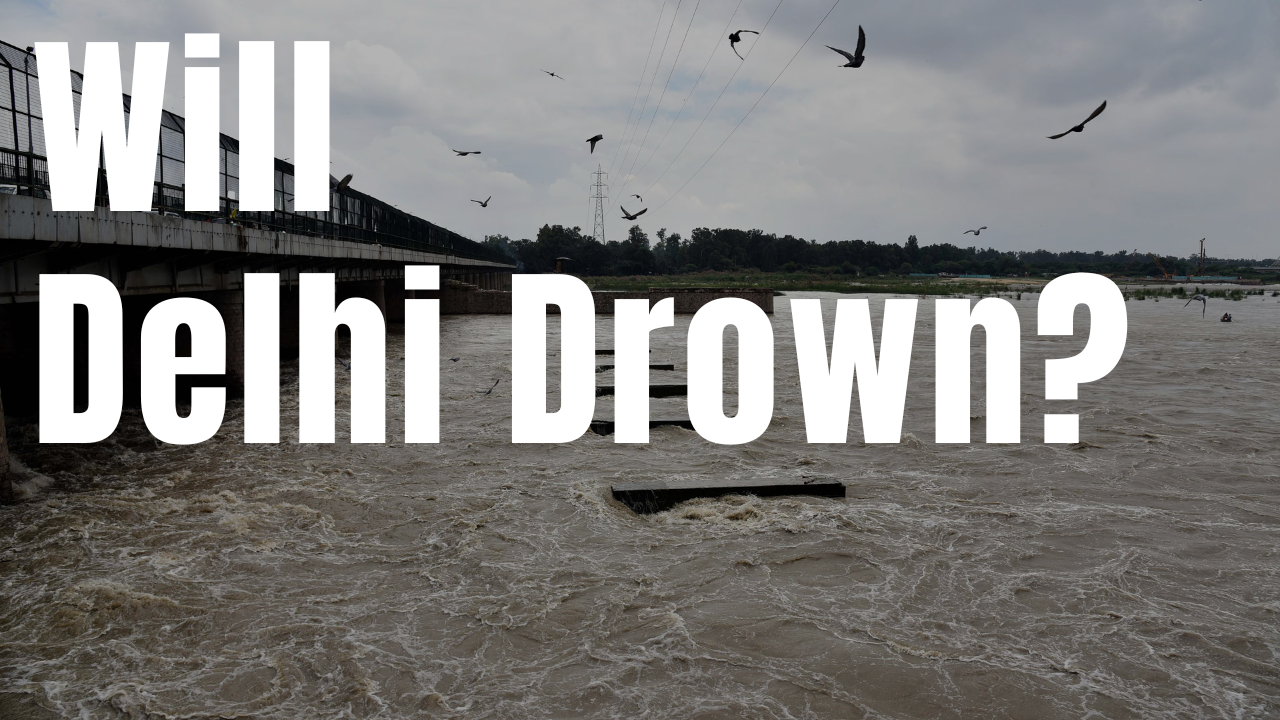Synopsis: People in Delhi’s low-lying, flood-prone districts are already being evacuated by the government.
Over the past three days, more than 37 people have died due to the torrential rain that has crippled north India.
The Yamuna in Delhi, which late yesterday night crossed the 205.33-meter danger level, soared to 206.32 meters this morning when Haryana let more water into the river from the Hathnikund dam.
Authorities reported that the river crossed the danger line earlier than anticipated. “With Haryana releasing more water today, the Yamuna will swell further in the next 24 hours,” they said.
In 1978, the river swelled to a record-breaking water level of 207.49 meters, the Yamuna’s “high-flood” level.
People in low-lying areas that are thought to be susceptible to floods are beginning to be evacuated by the authorities. They will be relocated to community centers and relief camps spread throughout the city.
16 control centers have been set up by the Delhi government to keep an eye on flood-prone districts and Yamuna’s water level, and Chief Minister Arvind Kejriwal has launched a series of initiatives to address the issue of waterlogging.
At a press conference, Mr. Kejriwal stated that Delhi had not experienced such heavy rains in the previous 40 years. “The last time it rained this much in a 24-hour period was in 1982 when there was 169 mm of rainfall. As a result, this rainfall is unusual, and regrettably, the city’s drainage infrastructure was not built to endure such heavy rainfall,” he said.
For Himachal Pradesh, Jammu and Kashmir, Uttarakhand, Haryana, Delhi, Uttar Pradesh, and Rajasthan, the weather office has forecast additional severe downpours.
The Army and National Disaster Response Force intervened to beef up the relief and rescue efforts in the afflicted regions as torrential rain engulfed practically all of north India.
Numerous rivers in the area are swollen. Many streets and buildings in cities and towns are still covered in knee-deep water.
Landslides and flash floods in Himachal Pradesh, the state hardest hit by the monsoon, caused millions of dollars worth of damage to homes and other property.
Sukhwinder Singh Sukhu, the chief minister, has been assured of all the support and assistance from Prime Minister Narendra Modi.
Numerous roads and highways in Uttarakhand are shut as a result of heavy rainfall, landslides, and reports of rivers with dangerously high water levels.
Authorities sprang into action in the worst-hit districts as a result of widespread waterlogging and floods caused by heavy rain in many locations in Rajasthan, Punjab, and Haryana.
In Rajasthan, torrential monsoon rains disrupted daily life by flooding highways, railroad tracks, and even hospitals. Today, more showers are anticipated across the state.
According to the weather service, the strong spell was caused by the interaction of a western disturbance and monsoonal winds.









